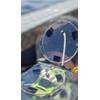MoU Signed for Pan-Arctic Cable System
Cinia Oy, NORDUnet A/S, Tusass A/S, the Dutch Subsea Cable Coalition, GlobalConnect AB, and Tampnet A/S have signed a European Memorandum of Understanding (MoU), recognizing the strategic value of a Pan-Arctic Cable System (PACS) and the contribution such a cable system will make to the global digital connectivity infrastructure.
The MoU affirms the partners’ vested interests in establishing and executing a long-term strategy for jointly realizing the development and implementation of a pan-Arctic submarine cable system.
Polar Connect is a proposed subsea cable on a direct route east of Greenland, close to the geographical North Pole, aiming to connect Europe, North America and Japan on the shortest possible route. NORDUnet is acting as a catalyst to form a Europe-based alliance to build the cable system and secure 10 % of the capacity of the fiber for European research and education.
Currently, all traffic goes either over the US which is a long path or over the Suez Canal which is a politically unstable region, says NORDUnet CEO Valter Nordh. Today, approximately 90% of data communication between Europe and Asia travels via the Red Sea.
“Joining forces with European partners in the evolution of PACS will be a significant contribution to realizing NORDUnet’s long-term Polar Connect strategic goal of establishing new subsea cable routes to Asia via the Arctic”, he said. “Realizing PACS would substantially contribute to the resilience of the global internet at large as well as the digital sovereignty and security of critical infrastructure access for Europe and the Nordic countries.”
The aim is for the service to be fully operational by the early 2030s, while some parts of system are planned to be in service earlier.
The shortest route from Asia to Europe runs close to the North Pole. “Following the events at the international scene, the global geopolitical situation is undergoing significant changes. This has spurred interest in more direct relations between Asia and Europe, and submarine cables are a big part of that agenda,” says NORDUnet’s Ieva Muraškienė.
Today, approximately 90% of data communication between Europe and Asia travels via the Red Sea, which presents both geographic and geopolitical challenges. Polar Connect’s route through the Arctic is the shortest path between Europe and Asia. Polar Connect is half the length of current connections, which reduces the time required to send a data packet by the same proportion.
NORDUnet did an introductory presentation on the Arctic connections two years ago when the 55th Asia Pacific Advanced Network (APAN) conference was held in Nepal. Since then, the Polar Connect partners have obtained funding from the EU Commission for a three-year project which will allow to conduct Arctic seabed surveys during the coming three summers.
Stockholm University is currently working on virtual seabed simulation to help examine seabed conditions for the Polar Connect route. “These investigations are important steps towards defining the final route for Polar Connect,” says Muraškienė.














 August 2025
August 2025



